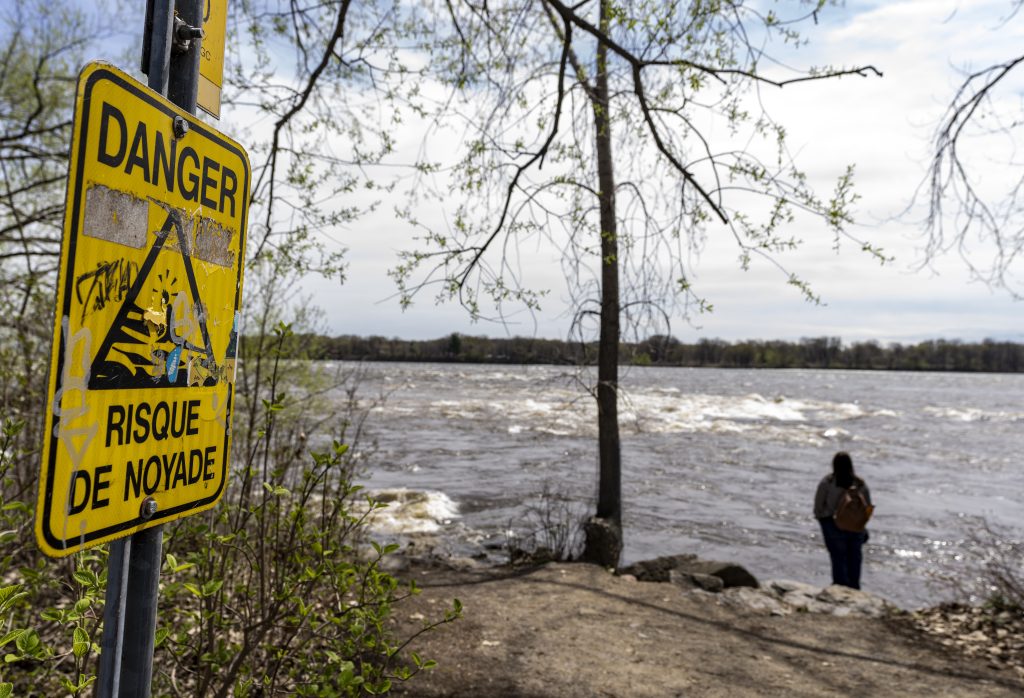No fewer than 37 people have drowned in Quebec since the beginning of the year, compared to 31 last year at the same time, with rivers being the main place of drowning in the province.
As the construction holidays officially begin, the executive director and spokesperson for the Lifesaving Society, Raynold Hawkins, is reminding people—as part of the 32nd National Drowning Prevention Week (NDPW)—of some tips that will help prevent this type of tragedy, which claims around a hundred lives in Canada each year.
His first piece of advice is to never be alone when doing any activity near, in, or on water, so that someone can call for help if necessary or come to the aid of the person in distress.
Related:
“You’re actually increasing the whole concept of water safety,” Hawkins said.
The second piece of advice from the SNPN spokesperson is the obligation to wear a personal flotation device (PFD) when engaging in water sports, which “will make the difference between a (summer) anecdote rather than a tragedy” in the event of a fall into the water.
While he recommends avoiding swimming in rivers at all times, Hawkins urges swimmers to stay away from rapids and not underestimate the deep currents that are imperceptible on the surface of the water. Swimming near a dam should also be avoided to avoid being sucked into a vortex generated by the opening of a valve.
Hawkins also recommends that parents of young children always have their child within reach and be constantly supervised, as child drowning is a “silent phenomenon” that can occur in 15 to 20 seconds.
“When you’re with children, you have a mandate to supervise at all times,” explains Hawkins. According to the Lifesaving Society, 80 per cent of drownings of children under 5 were due to absent or distracted supervision.
For older children and teenagers, two practices should be avoided: holding your breath for as long as possible in the water – which can cause asphyxiation, making any attempt at resuscitation more difficult – and diving into shallow areas.
In any case, the director general of the Lifesaving Society recommends swimming parallel to the shore rather than heading out to sea.
He notes that more and more new arrivals are among the drowning cases.
How to get out of it?
According to Hawkins, there’s no doubt that a large portion of the population overestimates their swimming ability. According to him, you need to be able to swim at a depth of approximately 15-25 meters to consider yourself capable of swimming in deeper water. Otherwise, Hawkins advises staying as deep as possible where the water reaches your armpits.
“Despite what families tell us, our victims overestimate their ability to swim,” says Hawkins.
However, there are some tips that are in order if a person finds themselves in a difficult situation.
In the case of rivers, Hawkins recommends getting into a supine position with your feet forward to avoid hitting an obstacle, then starting to paddle with your hands to head toward the bank.
In the case of stagnant bodies of water, as soon as you are no longer touching the bottom, Hawkins advises “making a star” on your back, lifting your face out of the water, then taking a long breath to expand your lungs and thus increase your buoyancy. He then recommends starting to paddle with your hands to try to reach the shore.
Drownings and global warming
Hawkins has no doubt that there is a correlation between the number of drownings and global warming. The hotter it is, the more people want to cool off wherever they can.
“Our concern is that the global warming we are experiencing could bring forward the season of water-related incidents, just as it could delay it,” he explains.
He added that the summers of 2012, 2017, and 2020 were extremely hot and also the deadliest in terms of drowning. Each year, more than 70 per cent of drownings occur between May and September, with a peak in July.
–This report by La Presse Canadienne was translated by CityNews





